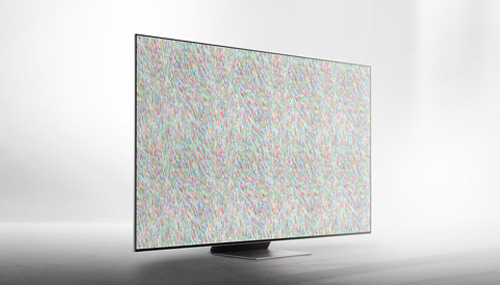
The Consumer Electronics Show, the country's largest tech exhibition, is always filled with exciting new products and concepts. But one of my favorite things about the show is the spotlight it puts on the emerging technologies driving these product launches.
One piece of next-generation tech generating buzz at this year's CES is QD-OLED. A variation of OLED from Samsung Display, the technology has made a splash through big TV and PC monitor reveals. But what exactly is QD-OLED, how different is it from regular OLED, and do we really need another acronym?
What is QD-OLED?

QD-OLED stands for "quantum dot organic light-emitting diode." The technology comes from Samsung Display, which started teasing it in 2019 and is rumored to have started mass production in November. You may also see Samsung refer to QD-OLED as "QD-Display."
Whatever its branding, don't be fooled. This isn't a brand-new technology. It's just a revamped version of OLED that offers the "widest range of color expression among the existing display technology," Samsung Display claims. Samsung says its QD-OLED TVs can cover 99.8 percent of the DCI-P3 gamut, CNET reports. That's very colorful, but it's not beyond what we'd expect of a premium OLED TV or monitor today.
Long story short, Samsung's QD-OLED panel is supposed to be like traditional OLED, which is known for its impressive contrast brought on by rich, deep blacks, but with more consistently vivid color across brightness levels. Samsung claims its QD-OLED panels will deliver more details in highlighted areas, whereas standard OLED panels may look more washed out and bring better color to darker areas, so shadows aren't overpowering. The company also claims that the tech delivers superior viewing angles because of how quantum dots work (we'll get to that).
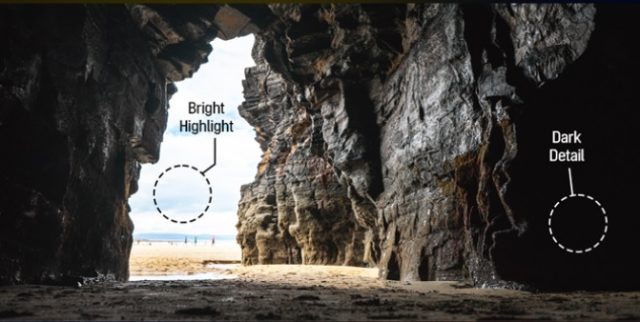
QD-OLED is also a big deal for observers of the OLED TV wars. LG Display makes the vast majority of larger OLED panels (like for TVs and monitors) today. Samsung, meanwhile, has offered just one short-lived OLED TV and has been focusing on QLED, a more colorful type of LED that can't replace OLED, for its high-end TVs. QD-OLED represents a new panel option for OLED TV brands, including Samsung, LG, Vizio, Panasonic, Philips, and PC monitor vendors.
QD-OLED vs. OLED
The difference between QD-OLED and today's OLED is the use of tiny semiconductor particles called "quantum dots." When struck by a certain frequency of light, a quantum dot can emit light. The color of that light depends on its wavelength, which is affected by the size of the quantum dot, which ranges from 2–10 nm.

Again, larger OLED displays mostly come from LG Display. LG Display's OLED panels use yellow and blue OLED materials to emit a white light. The light is applied to a filter with red, green, and blue subpixels to create the many colors you see on-screen. Some newer OLED panels, particularly HDR TVs, add a white subpixel for extra brightness, since OLEDs are generally dimmer than LED panels.
QD-OLED, on the other hand, uses a blue OLED material to generate its light source because, Samsung Display says, blue "has the strongest light energy." That light goes through a layer of quantum dots to create what's supposed to be a greater range of colors. QD-OLED displays also use a TFT layer to control the two layers.

Why does Samsung add quantum dots to the equation? To get "precise colors at every contrast level," Samsung explains, thus avoiding a washed-out appearance. Samsung says quantum dots have a simple structure and use light more efficiently, since light isn't partially eaten up by a filter. QD-OLED is also supposed to fight poor viewing angles, since quantum dots emit light uniformly. According to CNET, Samsung Display gets its quantum dots from a "specialized supplier."
Don't expect QD-OLED to be dramatically brighter than an LED display or even a standard OLED display. Samsung Display claims that a full QD-OLED TV can hit up to 200 nits full-screen or 1,000 nits with a 10 percent patch, according to CNET. CNET noted that it measured the LG C1 OLED TV at 800 nits with a 10 percent patch, while an LED TV can reach 2,000 nits. Meanwhile, the QD-OLED PC monitor announced at CES this week can hit 250 nits full-screen and up to 1,000 nits. With high-end PC monitors surpassing 1,400 nits, there's a clear disadvantage.
However, the ability to boost brightness in smaller patches could help QD-OLED deliver its claimed superior highlights. And extreme contrast and color (plus detailed highlights and shadows) can mitigate the downsides of a dimmer display. But we'll have to see QD-OLED in action to know if it's enough of an upgrade.
Starting in Q2 2022, all of LG Display's OLED TV panels will feature its new OLED EX technology, which uses deuterium compounds and machine learning for up to 30 percent more brightness than traditional OLED, the company says.
QD-OLED monitors
If you hadn't heard about QD-OLED before now, there's a good chance you did this week. Samsung Display has been talking about QD-OLED for a few months, but CES brought the promise of QD-OLED products you can actually buy this year.
Most of the hype is around TVs, but there's more to glean from the QD-OLED Alienware AW3423DW monitor announced this week.
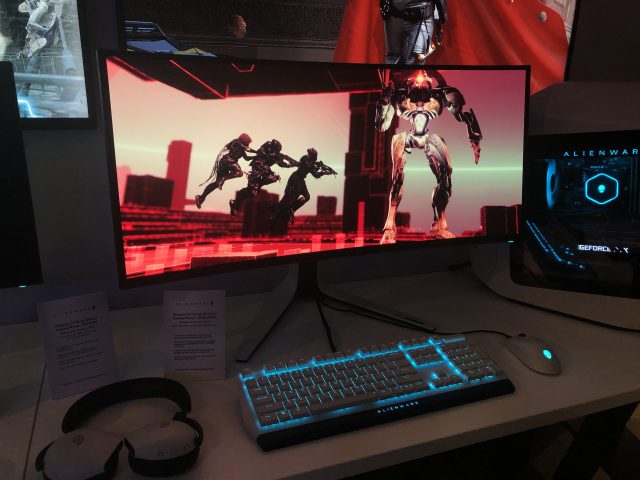
Alienware's AW3423DW claims 250 nits typical brightness and 1,000 nits peak (referring to a smaller test patch). It arrives with 99.3 percent DCI-P3 coverage, which is very high for a monitor but not above-average for an OLED one. It's also VESA DisplayHDR 400 True Black-certified, a standard that requires a black level of 0.0005 nit max.
I briefly saw the AW3423DW in person. The room was dim, but the display provided lively, rich color that made games look more vibrant. The AW3423DW certainly looked like a very good OLED monitor, but in the short time I was with it, I couldn't say if it was better (or worse) than other high-end OLED gaming monitors I've seen.
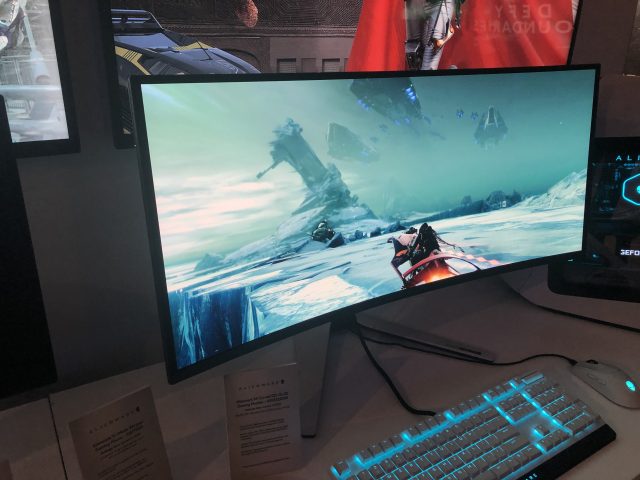
The 175 Hz monitor sports a 0.1 ms GTG response time, 3400 x 1400 resolution, and 1800R curve that shows the variety Samsung is willing to offer with QD-OLED. Alienware didn't provide a price for the AW3423DW but said the monitor would debut "this winter."
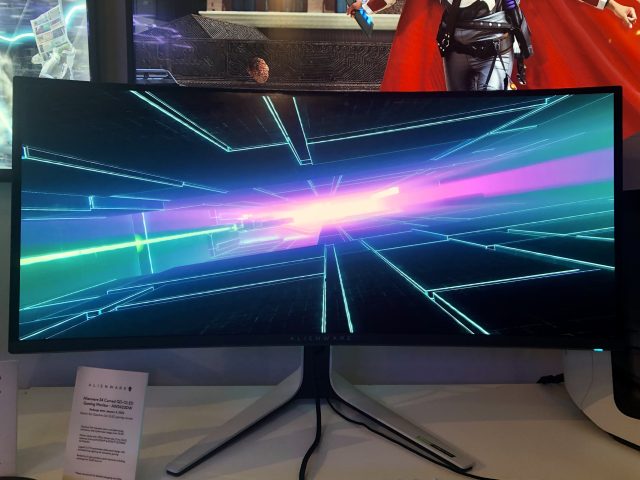
QD-OLED TVs
But most of the buzz about QD-OLED concerns TVs. And Samsung kicked the show off by confirming its first QD-OLED display, a 65-inch 4K TV. Samsung didn't reveal much, not even an official name. All we know is that the display has four HDMI 2.1 ports and a 144 Hz refresh rate. More information is expected over the next few weeks, a Samsung rep told CNET.
Samsung's TV was followed by Sony's reveal of its QD-OLED-equipped Master Series A95K TVs in 64.5 or 54.6 inches. Sony claims the displays will be up to 200 percent brighter than conventional TVs; however, the company didn't mention their brightness compared to regular OLEDs.

LG's 2022 OLED TVs announced at CES didn't come with a brightness spec, either. However, the TVs will debut a Brightness Booster feature that will use a new processor, a better algorithm, and heat dissipation to deliver a brighter picture.
The new TVs from Samsung, Sony, and LG also didn't come with any specific color claims. Sony merely said that the A95K will offer its "widest palette of colors," as well as its brightest, pointing to "natural shades and hues... consistently vivid colors and realistic textures at all brightness levels."
Burn-in, price, and other questions
As is common when exploring new tech at CES, questions remain long after the flashy product reveals. And we won't know more until the likes of Samsung, Sony, and Alienware start releasing products we can actually test out.
It's still unclear how QD-OLED will deal with common OLED barriers, like price and burn-in. Samsung told CNET that QD-OLED will either be just as good or better at handling burn-in as traditional OLED panels. It will fight burn-in by monitoring and adjusting pixel performance via a new tech called "real-time image sticking compensation," which should be an improvement over manual processes that can take up to 20 minutes.
Regarding pricing, you can find cheap 4K OLED TVs for under $1,000, but they can get much more expensive. Meanwhile, 4K OLED PC monitors are firmly in the four-figure range, due to limited availability and large sizes. QD-OLED is expected to be even more expensive than standard OLED because of limited manufacturing abilities compared to LG Display, which Display Supply Chain Consultants told CNET has about six times the power.
Samsung will also offer OLED displays with LG Display-made panels in 2022. This will give the company a way to compare the technologies and see which ones consumers gravitate toward more. As noted by CNET, QD-OLED pixels aren't small enough for 8K. While most of us are nowhere near ready for 8K in the home yet, it's something for big brands like Samsung to consider for the future.
As both CES and 2022 continue to unfold, we'll keep our eyes peeled for more information about the new tech and relevant products. Hopefully, we'll soon be able to determine if QD-OLED is really worth adding an acronym to the display world.
Explaining QD-OLED, Samsung’s display tech that is wowing CES - Ars Technica
Read More

No comments:
Post a Comment